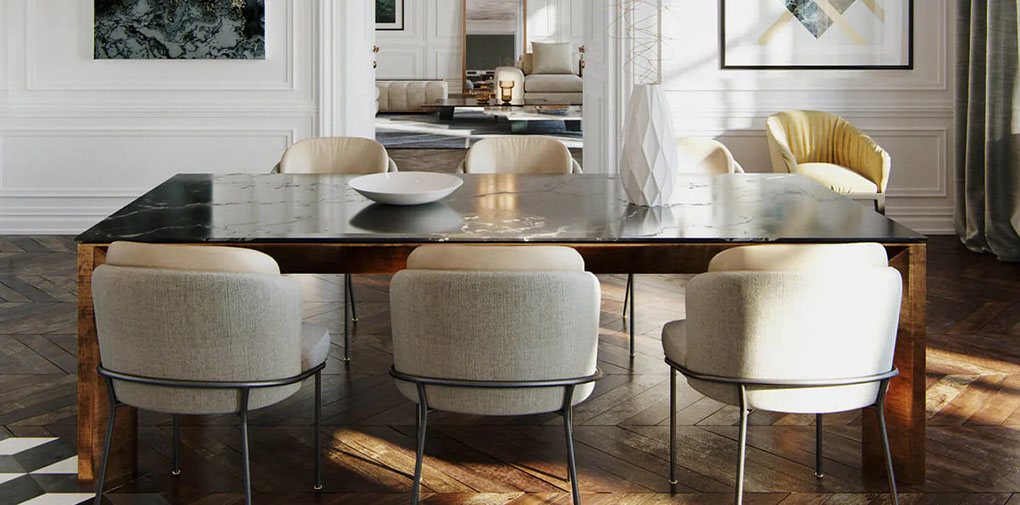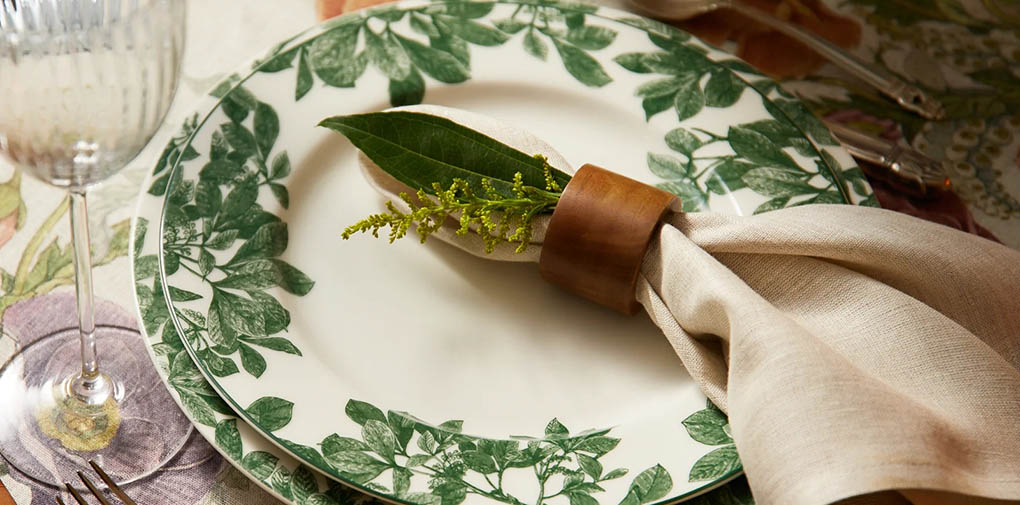How to Design a Dining Room That Brings Ritual to Every Meal
The dining room is more than just a space where we eat—it’s a place where we gather, celebrate, and create memories. Whether it’s a quick breakfast before heading out for the day, a leisurely lunch with family, or a festive dinner with friends, the atmosphere of the dining room can transform an ordinary meal into something special. But how do you design a dining room that infuses every meal with a sense of ritual and occasion? It all comes down to a few key elements that blend aesthetics, functionality, and ambiance.
1. Start with a Defined Dining Area
The first step in creating a dining room that brings ritual to every meal is to establish a clearly defined space. In an open-concept home or a small apartment, it’s important to make the dining area feel distinct, even if it’s part of a larger living or kitchen space.
Use a Rug to Define the Space: A well-chosen rug can ground the dining area, visually separating it from the rest of the room. Consider a rug that complements your color scheme and adds warmth and texture. Opt for a rug with a soft yet durable fabric that can withstand food spills and frequent cleaning.
Lighting is Key: Lighting plays a pivotal role in setting the mood for your dining space. A statement chandelier or pendant light directly above the dining table can provide focus and help create an intimate setting. Warm, soft lighting often creates a cozy and welcoming environment, perfect for long, relaxed meals. Make sure the light source is adjustable to create a range of moods, from casual meals to special occasions.

2. Choose the Right Dining Table
The dining table is the centerpiece of your dining room, and its design should reflect the kind of atmosphere you want to create. A well-chosen table sets the tone for every meal, whether it’s an elegant dinner or a casual breakfast.
Consider the Size and Shape: The size of your table should reflect the size of your dining room and your family’s needs. If you regularly host large gatherings, a large rectangular or oval table may be the right choice. On the other hand, if your family is small or you don’t entertain often, a round or square table can create a more intimate and cozy vibe. Choose a table that allows enough space for everyone to feel comfortable but isn’t too large for the space, which could create a sense of distance.
Material Matters: The material of the table can also influence the ambiance. A wooden table, for example, exudes warmth and timeless appeal, making it ideal for creating a rustic or classic setting. A glass or metal table may lean more modern or minimalist, contributing to a sleek, contemporary feel. Choose materials that align with your personal style and that are durable enough to withstand daily use.
3. Incorporate Comfortable Seating
Comfortable seating is essential to make every meal a ritual. The right chairs not only add to the room’s style but also enhance the dining experience.
Prioritize Comfort: When selecting dining chairs, comfort is key. Look for chairs that offer proper support and are comfortable for long meals. Upholstered chairs with soft, cushioned seats and backs are ideal for those who enjoy extended dinners. If you have a larger space, you may also want to consider adding a bench along one side of the table to create a more casual, communal seating arrangement.
Mix and Match Styles: If you like a bit of eclectic flair, consider mixing different styles of chairs to create a dynamic and personalized look. Combining traditional wooden chairs with modern metal ones, for example, can infuse the space with character and energy.
4. Set the Tone with Color and Textures
The color palette and textures in your dining room can help create a sensory experience that makes every meal feel like an occasion. The right colors and textures can evoke warmth, relaxation, or even energy, depending on your desired atmosphere.
Warm Tones for Intimacy: Rich, warm colors such as deep reds, terracotta, or mustard yellow can create a cozy and inviting space. These hues encourage conversation and make the dining area feel like a place where people want to linger and connect.
Neutral Tones for a Calm Atmosphere: If you prefer a more serene and relaxed dining experience, consider neutral tones like whites, creams, or soft greys. These colors provide a clean, minimalist backdrop that allows the focus to remain on the meal and the people around the table.
Add Texture: To create visual interest, mix various textures in your dining room design. A soft velvet chair against a wooden table or a woven table runner atop a glass surface adds layers and depth to the space. Textured elements like woven placemats or ceramic dishes also bring tactile interest to the table, enriching the dining experience.

5. Focus on the Dining Table Setting
The table setting is where the magic happens—it’s the ritualistic element that truly elevates a meal. Thoughtfully setting the table before each meal gives a sense of occasion to even the simplest of dinners.
Create a Beautiful Centerpiece: A centerpiece can be anything from a vase of fresh flowers to a decorative bowl filled with fruits or candles. Make sure the centerpiece complements the size of your table and isn’t so large that it obstructs conversation. Seasonal arrangements—such as a pumpkin display in fall or a fresh floral bouquet in spring—can keep the table setting fresh and dynamic.
Elevate with Special Tableware: Invest in good-quality dishes, glasses, and cutlery that elevate the dining experience. Fine china or a stylish dinnerware set can instantly make a meal feel more special. Even for everyday use, a set of aesthetically pleasing plates, napkins, and utensils can make meals feel more deliberate and thoughtful.
Pay Attention to Lighting and Candles: Lighting plays a huge role in creating an atmosphere of ritual. For dinner parties or intimate meals, consider adding candles to the table. A few strategically placed candles can add warmth and a soft glow, making the meal feel like a celebration. Choose candles in elegant holders or votives for an extra touch of refinement.
6. Add Personal Touches
To truly make the dining room a space that feels like a place of ritual, don’t forget to add personal touches that reflect your own style and preferences.
Incorporate Artwork or Family Heirlooms: Art can help set the mood in the dining room. Whether it’s a painting that evokes nostalgia or a series of photographs of your family’s travels, personal art adds meaning to the space. Family heirlooms, like an antique serving tray or a vintage wine rack, also tell a story and make the space feel uniquely yours.
Use Table Linens and Napkins: Tablecloths, runners, and napkins are small details that can make a big impact. Choose linens that complement the rest of the room’s decor and suit the season or occasion. Linen napkins, for example, are a timeless addition that elevates the look of the table while adding a touch of sophistication.
7. Create a Welcoming Atmosphere with Music
Music is an often-overlooked element in dining room design, but it can significantly contribute to the sense of ritual and ambiance. Soft background music can enhance the atmosphere without overwhelming conversation. Select playlists that suit the mood of the meal—something calming for a quiet family dinner, or upbeat tunes for a lively gathering with friends.
Creating a dining room that brings ritual to every meal involves careful attention to details—from the furniture and lighting to the table settings and personal touches. By designing a space that’s comfortable, functional, and beautiful, you can turn every meal into a celebration of togetherness, making the dining room a central and cherished part of your home. With the right atmosphere, every meal can feel like a special occasion, a moment to slow down, appreciate good food, and connect with loved ones.





